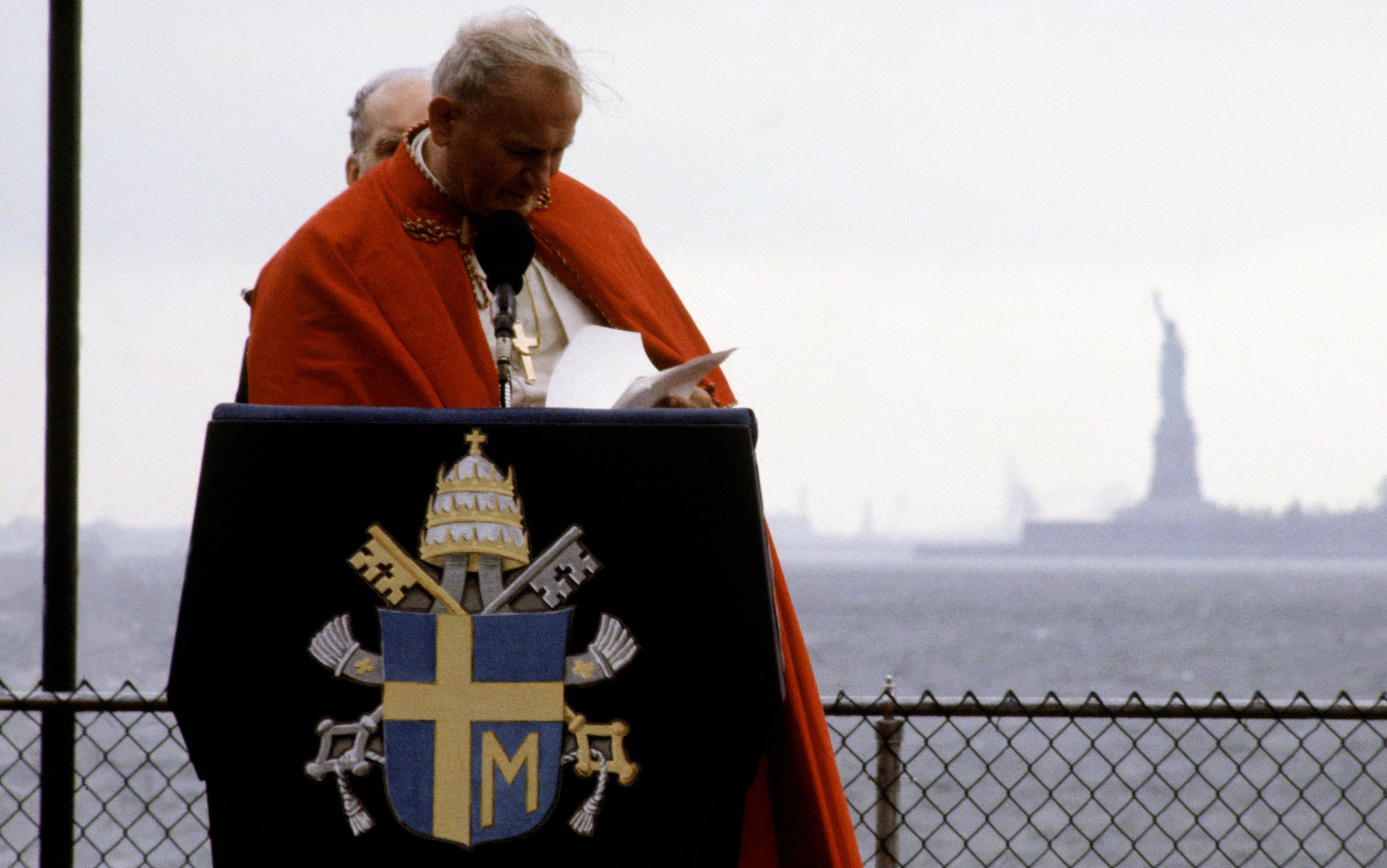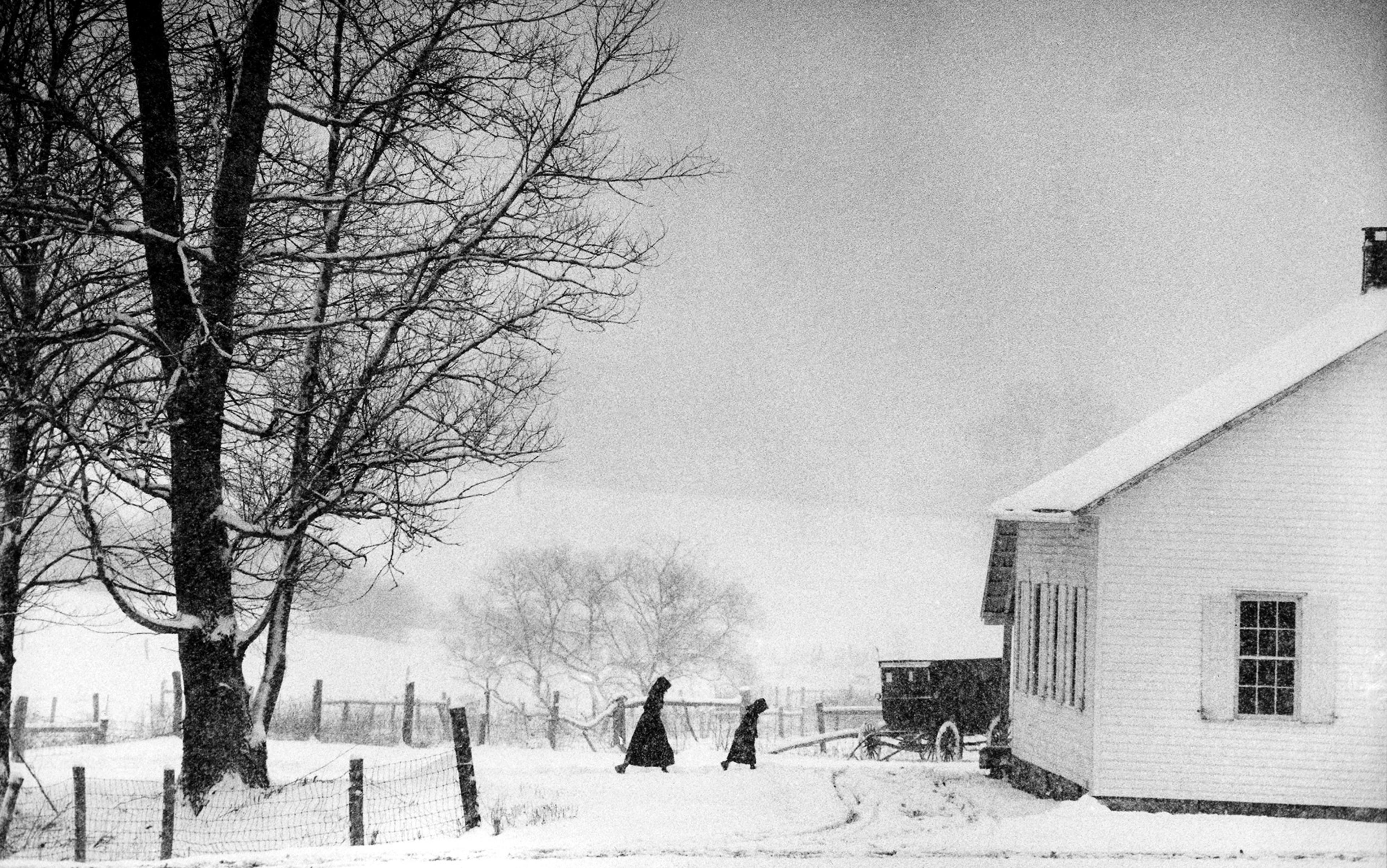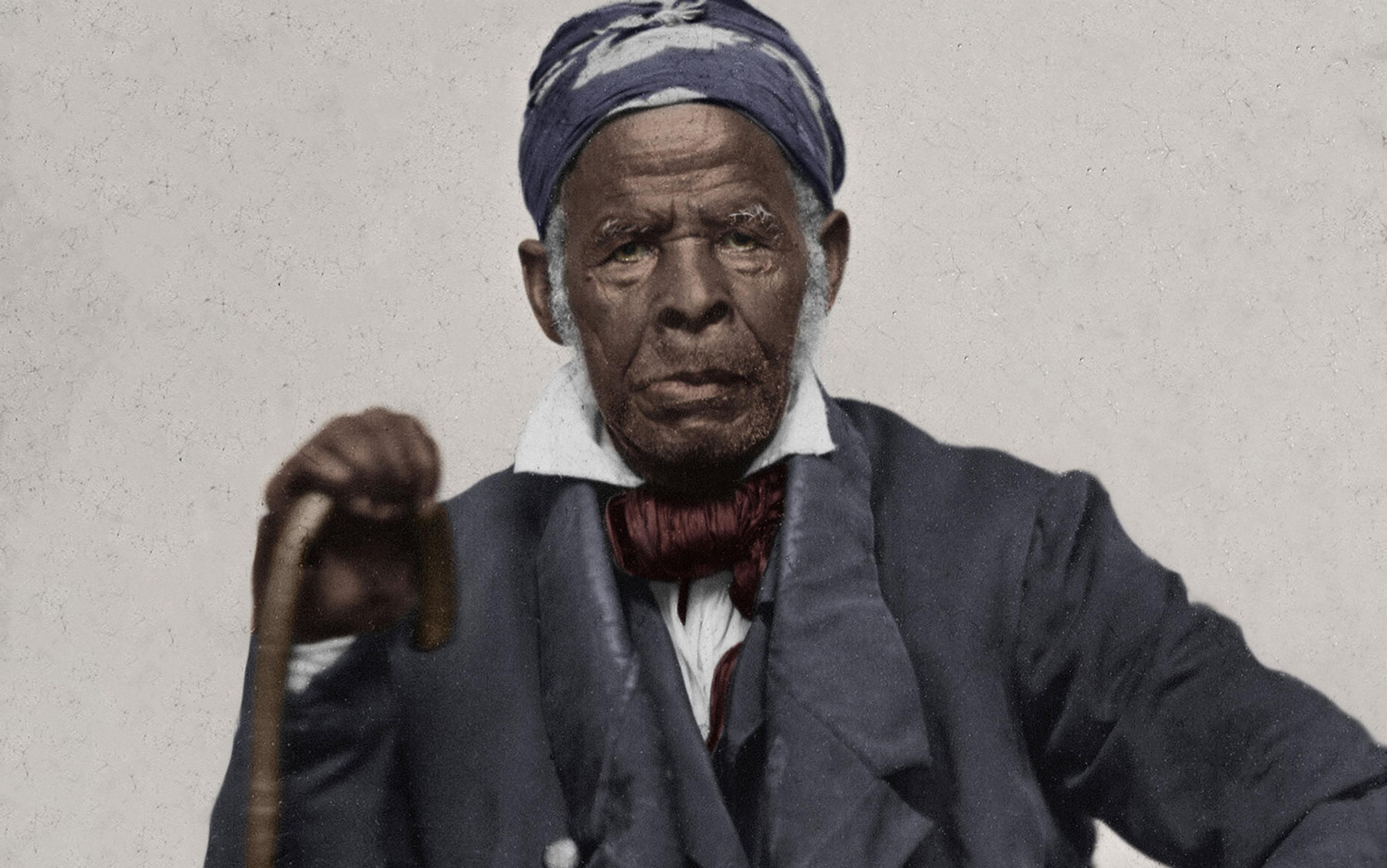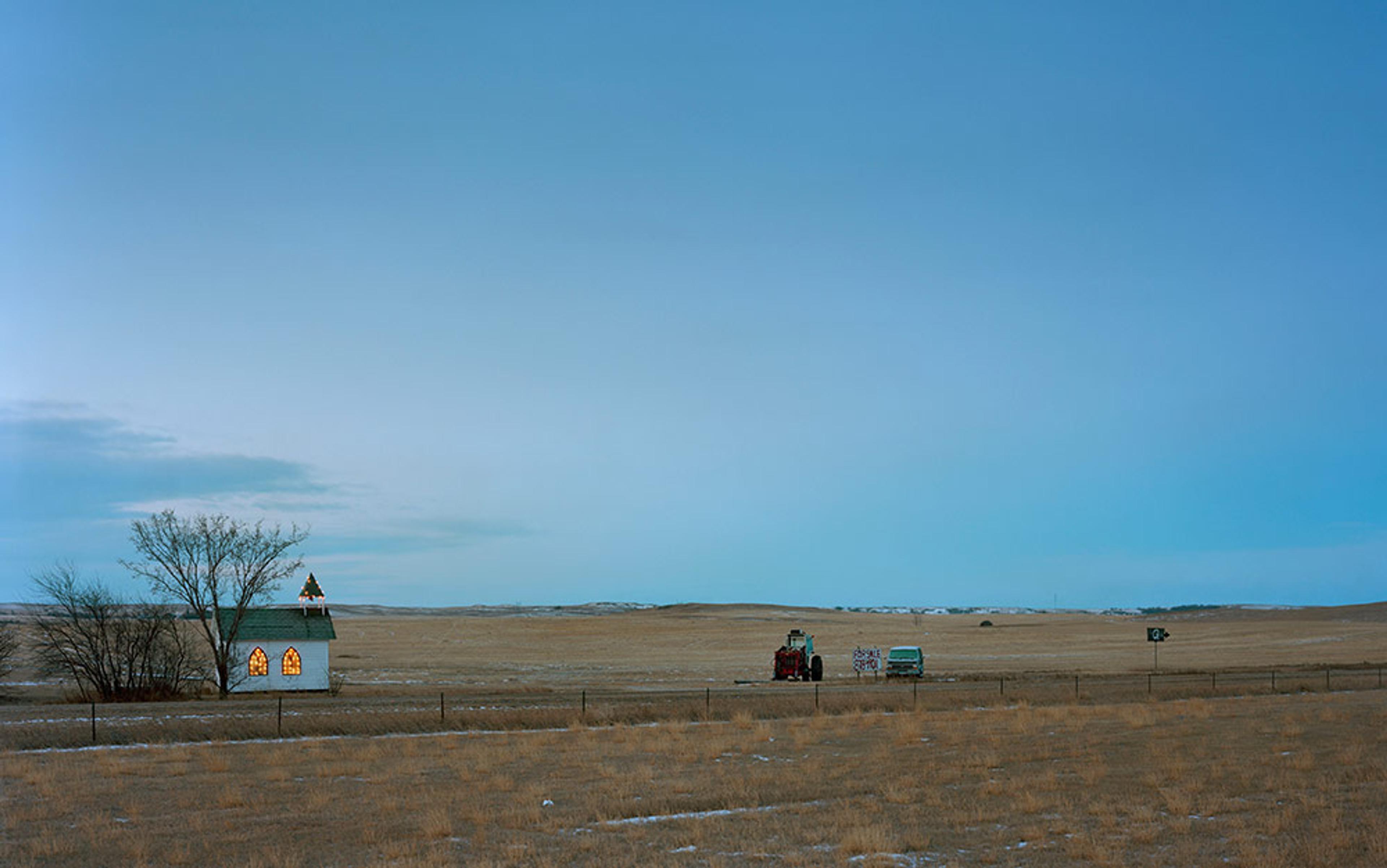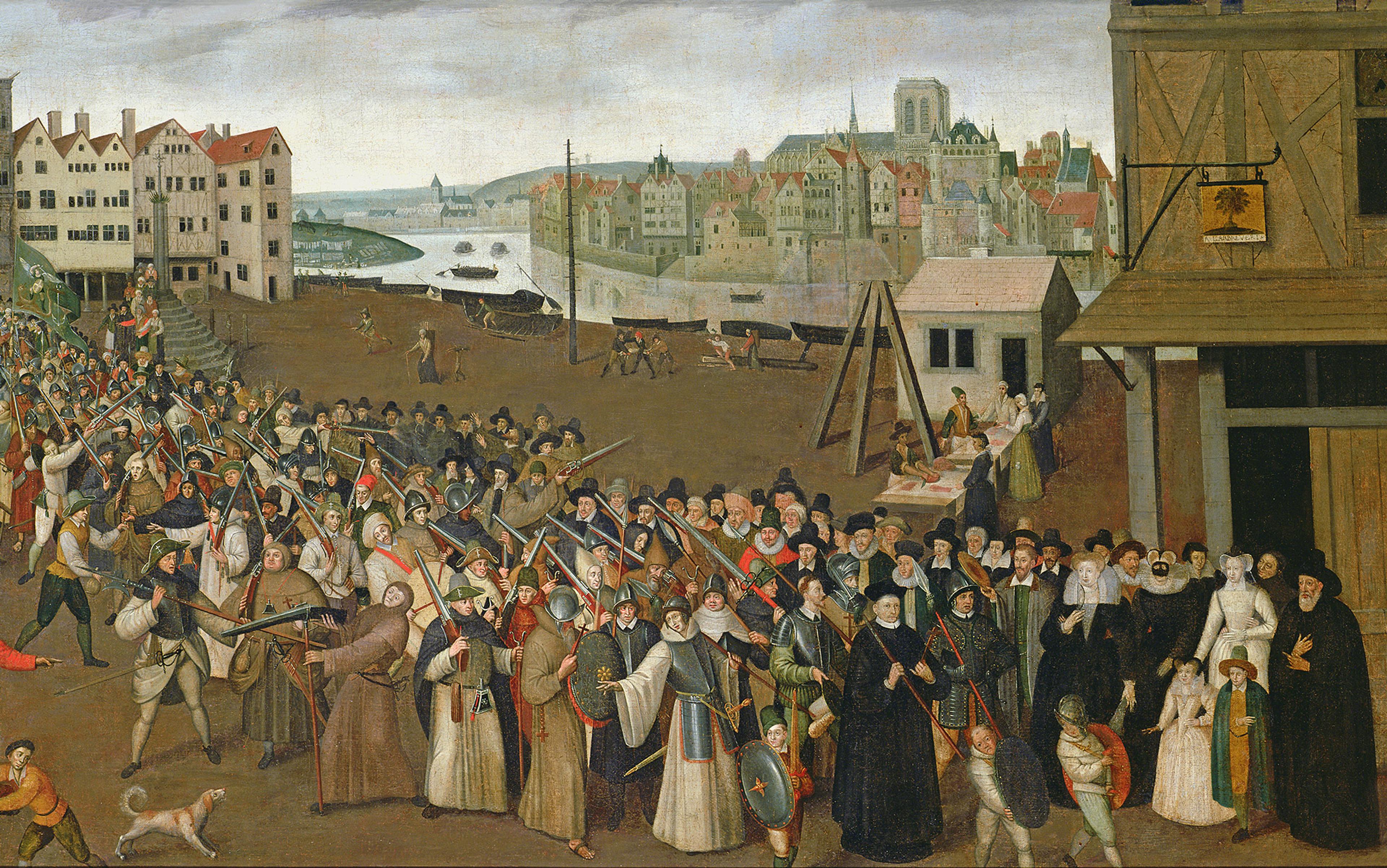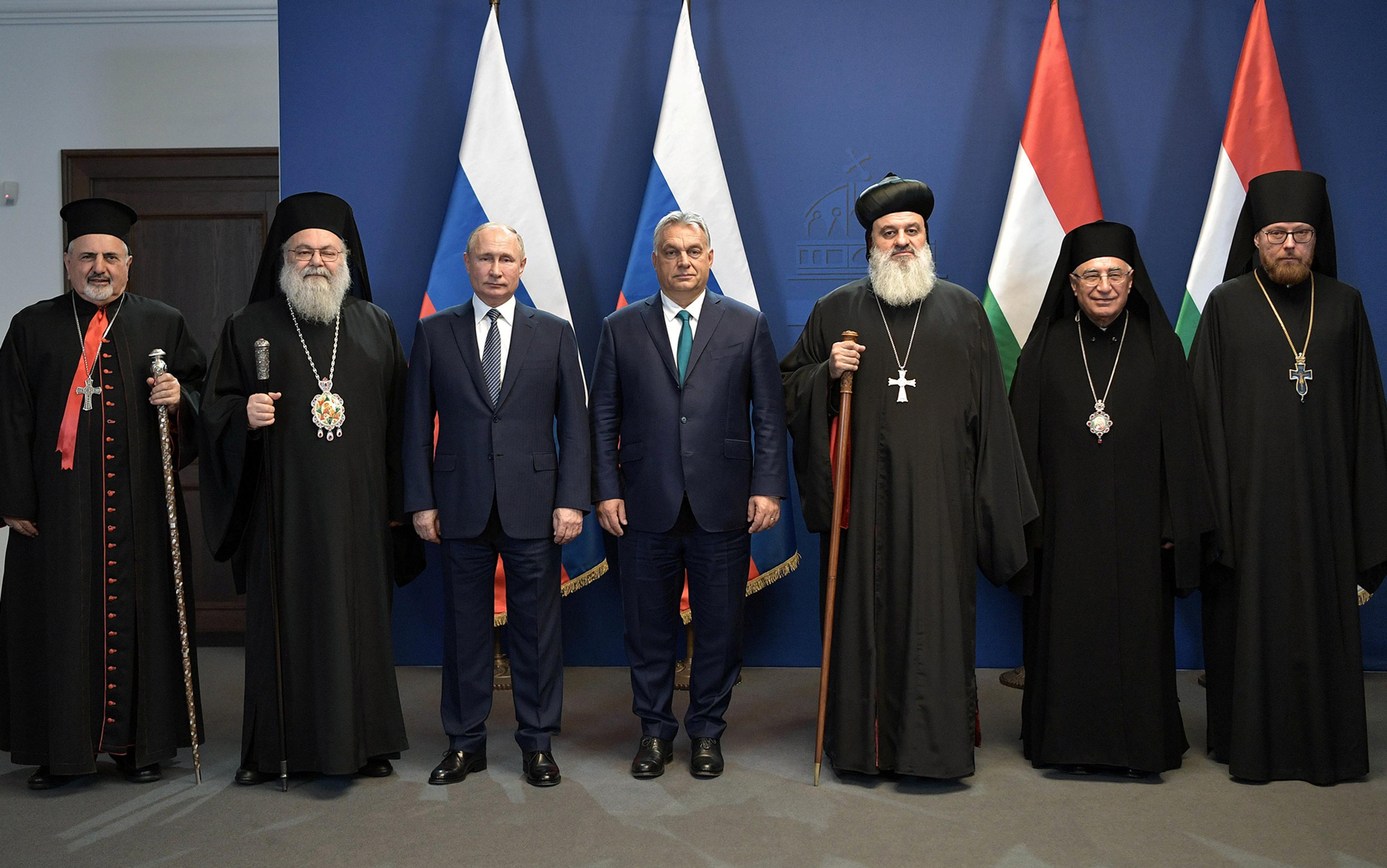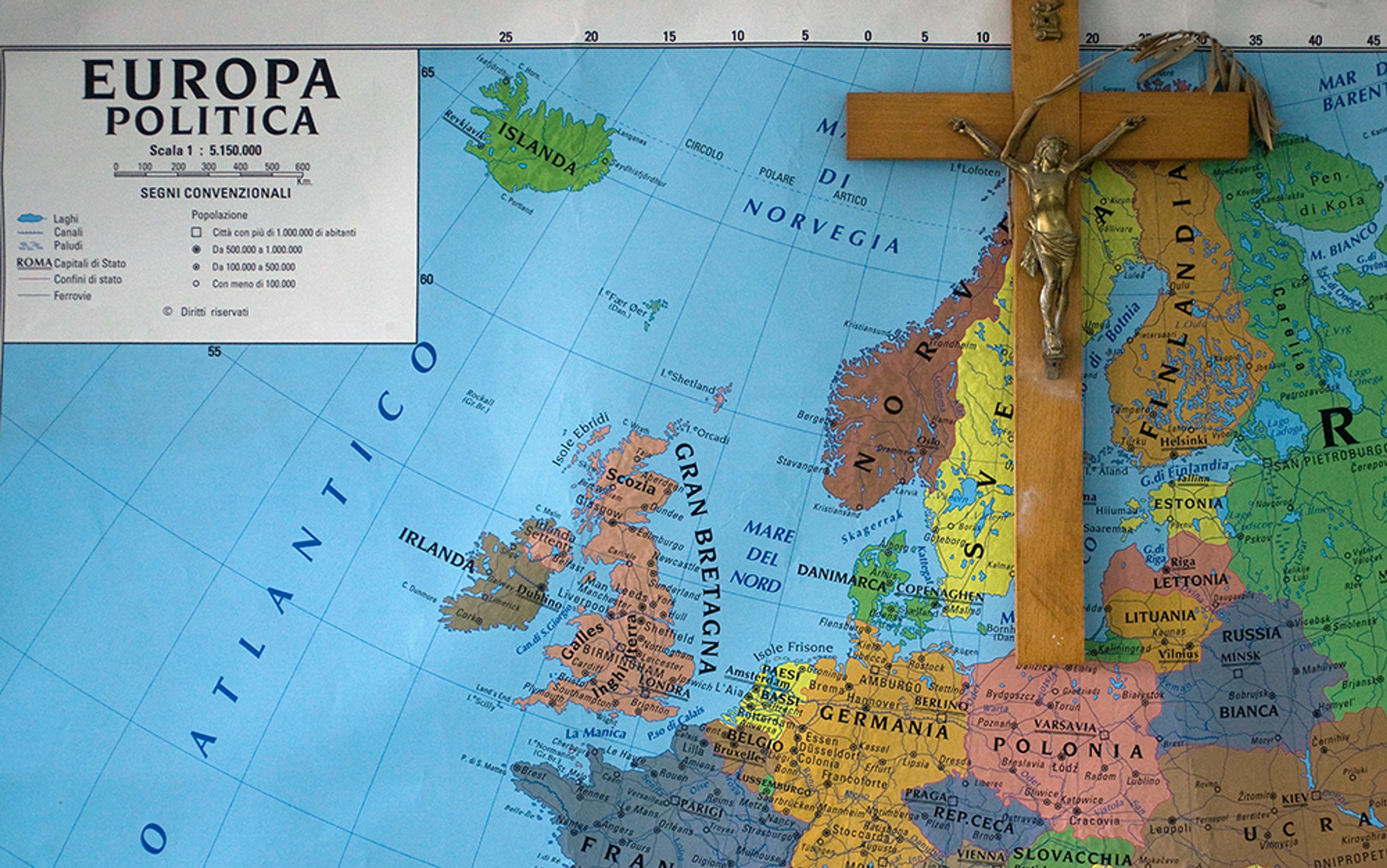For nearly 350 years, anti-Catholic bias was a reliable and powerful presence in the political and religious culture of the United States. Today, when the Louisiana governor Bobby Jindal, for example, insists that Muslim immigrants ‘want to use our freedoms to undermine… freedom’, it can be easy to forget that for most of US history, Catholicism, not Islam, was the bogeyman against which Americans defined themselves as a free, noble and (some have said) ‘chosen’ people.
It was a desire to get away from what the English Puritan Samuel Mather in 1672 called ‘the manifold Apostasies, Heresies, and Schisms of the Church of Rome’ that drove the Puritans to Massachusetts in the 1620s and ’30s. They believed that the Church of England was tainted by the remnants of Catholic theology, and they thought these ‘popish relics’ destroyed the freedom people needed in order to accept salvation from God. Because Americans held onto this Puritan understanding of Catholicism for centuries, the idea that the founding of Massachusetts had been a bold bid for ‘freedom’ became an almost religious truth. Even though people were actually executed and banished in colonial Massachusetts because they held ideas about religion that were considered ‘newe & dangerous’, schoolchildren still learn this myth in US classrooms.
In 1774, John Adams felt sorry for the Catholics he observed at a mass in Philadelphia. The ‘poor wretches,’ the future US president told his wife, were ‘fingering their beads [and] chanting in Latin, not a word of which they understood’. A century later, the cartoonist Thomas Nast was less sympathetic on the pages of Harper’s Weekly. Nast’s Catholics in the 1860s and ’70s were violent and drunk ‘Paddys’ and ‘Bridgets’ too ignorant to think for themselves and dominated by priests who worked to obliterate the separation between church and state.
In 1960, the self-help guru Norman Vincent Peale worried that Catholic voters were theocracy-loving minions who’d put a man, the Catholic John F Kennedy, in the White House who couldn’t ‘withstand the determined efforts of the hierarchy of his church’ to meddle in US politics. So Peale (the original ‘positive thinker’) formed the National Conference of Citizens for Religious Freedom and campaigned for Richard Nixon.
For most of US history, voters, ministers and lawmakers believed that there was something fundamentally un-American about Roman Catholics. They weren’t ‘free’ – and they couldn’t be free so long as they worshipped within the Church of Rome. Catholics were an element in US culture that had to be kept as far away as possible from the centres of political, military, economic and educational power. Letting such an intrinsically enslaved element ‘have its say’, so to speak, would constitute an existential challenge to the US, since at its core, the country was just an idea – the idea of freedom.
Given how long Americans feared Catholicism, the years that have passed since Kennedy’s election in 1960 have been remarkable. Today, six of the nine justices on the US Supreme Court are Catholic. The US hasn’t had another Catholic president since Kennedy, but that’s not because Protestants still fear the corrupting potential of Catholicism. Jeb Bush, a Catholic convert, is already being held up as the frontrunner for the Grand Old Party for 2016. Paul Ryan and Joe Biden both spoke proudly of their Catholic upbringing when competing to be vice-president in 2012. Ryan talked about the Catholic concept of ‘subsidiarity’ when recommending that Medicare be turned into a voucher programme, and Biden pointed to the ‘dignity in every man and woman’ that he’d learned about from priests and nuns when supporting President Barack Obama’s overhaul of the healthcare system.
The former altar-boy John Kerry failed to win the White House in 2004, but it wasn’t because Protestant voters had concerns about his Catholic faith. If anyone had concerns about Kerry’s faith, it was his co-religionists. More than half of the Catholics who voted in 2004 cast their ballots for George W Bush, the evangelical incumbent from Texas, rather than the Catholic senator from Massachusetts, in part because Kerry’s record on abortion didn’t reflect the teachings of his church. In this sense, the senator’s Catholicism might have been a political burden for him – but not in the way it was a burden for Al Smith, the 1928 Democratic nominee for president, who swept the Catholic vote, but lost the election in a landslide because many Americans saw him as being on the side of ‘rum, Romanism, and ruin’.
The story of anti-Catholicism’s dramatic disappearance from the cultural landscape in the US (Dan Brown’s novels notwithstanding) is a complicated one. It would be a mistake, however, to see the story as proof that the destiny of the US is to become a place of complete religious tolerance. Americans no longer consider Catholicism to be a threat because the very idea of ‘freedom’ in the US has changed into something more compatible with the corporate approach to freedom that the Catholic Church has always insisted upon. The Catholic understanding of religious liberty and church-state relations has also changed, becoming more compatible with the US vision and the reality of religious pluralism.
But what hasn’t changed – at least not fundamentally – is a need in the US to oppose religious groups that don’t define freedom in modern liberalism’s terms. Indeed, this need has only expanded in recent years into parts of western Europe where concepts of freedom also contribute to national identity, but immigration has forced native-born people to confront the reality that some don’t understand freedom to be a matter of liberté and egalité.
15 people were killed in bible riots in Philadelphia, and more than 50 injured. Two Catholic churches and a seminary were destroyed
For example, the status or condition of women in many cultures that define freedom as ‘submission’ to the will of God is repugnant to people who understand freedom to be the exercise of certain individual rights, such as the right to personal expression or a jury of one’s peers. But repugnant, too, has been the condition of some women in Western countries such as the US and Austria, where an overweening respect for the rights to privacy and personal property enabled Ariel Castro and Josef Fritzl to keep women imprisoned in their basements for decades, even though both men had been visited by police officers and had next-door neighbours.
Americans are actually less violent today than they used to be when encountering a religious ‘other’. The protests over building of an Islamic cultural centre near the World Trade Center site in 2010 did not deteriorate into deadly riots, the way rumours of Catholic efforts to remove Protestant bibles from public schools sparked protests in 1844. At least 15 people were killed that year in the Kensington and Southwark Bible Riots in Philadelphia, and more than 50 were injured. Two Catholic churches and a seminary were destroyed, and when the fighting was finally over, the collective property damage exceeded $150,000, at a time when yearly household incomes averaged less than $900.
Signs and bullhorns were the only weapons anyone brought to the protests in New York in 2010. But make no mistake: the impulse that drove those people to gather in downtown Manhattan, predicting and decrying the implementation of Sharia in New York City, is the same impulse that brought Protestants in Philadelphia to the streets in 1844 – the urge to protect the US from the perceived threat of a religious population that understands freedom in terms that are very different from those of most Americans.
One of the ironies of the American Revolution is that the colonists’ opposition to British rule began as what they thought of as a defense of their rights as Englishmen. England had once been a ‘land of freedom and delight’, according to the Calvinist minister Abraham Keteltas, whose sermons helped to bring skeptical residents on Long Island over to the Patriots’ side. The country had grown corrupt, however, its governmental ministers in London made greedy by the spoils of colonialism. Colonists thought that ministerial corruption threatened the freedom that people on both sides of the Atlantic believed was their ‘birthright’ as Englishmen. Only the colonists, though, were strong and virtuous enough to see this truth and do something about it. It was for the sake of liberty, Keteltas insisted in 1777, that ‘the present civil war is carried on by the American colonies’.
When he justified the revolutionary conflict in this way, Keteltas was essentially saying that there was a new sheriff in town. England’s government was no longer the world’s best protector of the ‘absolute rights of individuals’, which included the rights to property, political representation, personal security and the rule of law. Individual rights had a new set of protectors who lived in North America; their names were Thomas Jefferson and Benjamin Franklin.
Rights that were ‘absolute’ were inalienable ‘gifts of God to man at his creation’, according to Anglo-American jurists such as William Blackstone. They were not, in other words, something governments gave to people; absolute rights were something governments protected for people. History had shown, however, that kings and politicians were more than capable of insulting God’s wishes and becoming tyrants. It had happened in England in the late 1680s, as all colonists knew. And now, nearly a century later, it seemed to be happening again.
The events of 1689 loomed large in the minds of the men and women who pushed for independence in the 1770s. England’s king that year had been James II and, in his short time on the throne, he’d managed to dismiss Parliament, expand the size of the army, and suspend the charters of seven colonies in North America.
The reason he’d done all of this was clear – at least to many members of Parliament. James was a Catholic. He’d converted after fleeing to France at the age of 15, following the execution of his Anglican father, King Charles I, during the English Civil War, the Calvinist-tinged uprising of the 1640s. While his conversion might have been understandable, given the way Protestants in his home country had treated his father, many still felt it was ‘inconsistent with the safety and welfare of this Protestant kingdom to be governed by a popish prince’. Catholicism, after all, was a faith that demanded blind obedience, crushed independent thought, and inculcated the habits of ‘tyranny and arbitrary power’ into its adherents. It was no surprise, really, that James had chosen to disregard the God-given rights of his subjects; he was just treating the English people the way the Pope treated Catholics. And in 1689, the Anglicans and Calvinists in Parliament realised he would have to be stopped.
To that end, they ‘invited the prince of Orange to vindicate their liberties’, according to the well-known history that Keteltas recited to his congregants in the lead-up to the Revolutionary War. William of Orange was the Calvinist stadtholder of several provinces in the Netherlands. He was also James II’s son-in-law, married to the king’s oldest child, Mary, who’d been raised as an Anglican by her mother. Forty years earlier, Anglicans and Calvinists had hated each other enough to fight a civil war that led to the execution of the king. But in a classic diplomatic move, whereby the ‘enemy of my enemy’ becomes ‘my friend’, England’s Protestants united in 1689 to launch a coup that forever linked ‘English’ and ‘Protestant’ identity. To this very day, Roman Catholics are barred from sitting on the English throne – though since 2013, heirs to the throne have been permitted to marry Catholics, provided they don’t convert.
However, what became known as ‘the Glorious Revolution’ did more than just link ‘English’ and ‘Protestant’ identity. It also settled the question of what ‘freedom’ was, and defined the concept for English-speaking people in thoroughly Protestant terms. Freedom became the absence of outside restraint – or ‘the power of acting as one sees fit,’ in the words of Blackstone. Rights were something held wholly and intrinsically by the individual, because without them, individuals could not fulfill the responsibilities given to each person by God. The Protestant emphasis on sola scriptura obliged people to read their Bibles and use their reason to construct a personal piety that began with the Word and the undeniable reality of their sinfulness. Freedom, in this Protestant way of thinking, was something given to human beings by the Creator so that they might choose to receive God’s grace. Governments that respected an understanding of freedom that began with the rights of the individual, then, were thought to be ‘godly’ governments.
What they called ‘popery’ (to emphasise Catholics’ servile obedience to the Pope) was synonymous with ‘slavery’
Freedom was not something to be realised by human beings only with the help of others. This way of thinking reflected the Vatican’s belief that truth was something too complex for any one person to access on his own. It’s not that there was no freedom within early modern Catholicism; however, freedom was the fulfillment of God’s wishes for humanity, and Scripture and human reason, on their own, were not enough to understand what those wishes were. For this reason, God had created a ‘Brain Trust’ of really smart men to advise Him on the ‘New Deal’. These men studied Scripture and the teachings of earlier theologians to uncover the fullness of God’s grace. Governments that allowed themselves to be guided by the Church, therefore, were the only godly governments for a Catholic before the modernising influence of the Second Vatican Council of 1962.
In the wake of the Glorious Revolution of 1688, the vast majority of English-speaking people believed that freedom did not exist within the confines of the Catholic Church. What they called ‘popery’ (to emphasise Catholics’ servile obedience to the Pope) was synonymous with ‘slavery’. In the decades that followed 1689, the colonists in North America considered the king and parliament to be the best checks against popery the world had ever seen. That’s why they spoke of the rights that God had given to them as ‘the rights of Englishmen’. But following the Seven Years’ War (1754-63), England’s colonists became convinced that parliament was no longer respecting their rights. And even though not a single MP was Catholic, they expressed their fears in the familiar language of anti-Catholicism.
Political leaders predicted that the US would soon be ‘fed with blood by the Roman Catholic doctrines’ and subjected to the kind of ‘tyranny under which Europe groaned for many ages’. Newspapers fretted that ‘the medium of French law and popery’ would soon be ‘established’ in the colonies, ‘the one enslaving the body, the other the mind’. In 1827, one veteran recalled that ‘the real fears of popery… stimulated many timorous people to send their sons to join the military ranks’. The common cry of the Patriots, he recounted, was ‘NO KING, NO POPERY!’
These concerns about ‘Jesuitical designs’ didn’t go away after the war was over, but public expressions of anti-Catholicism did decrease considerably in the years following independence, partly because US Catholics had sided with the Patriots, and partly because there weren’t many Catholics in the US to stimulate the fear. The first US bishop, John Carroll, estimated the country was home to 30,000 Catholics in 1790, the year the nation’s first census put the overall population at nearly 4 million. Catholics were ‘as rare as a comet or an earthquake’ in the US, according to John Adams. But that situation was soon to change.
The first Catholic immigrants to come to the US in large numbers were not the starving and destitute, famine-fleeing Irish who dominate the narrative in survey courses on US history. They were Germans who started coming over in the 1820s to get away from religious violence in their home provinces. Some of these Germans stayed in the coastal cities where they first landed, but many more headed inland to places such as Cincinnati and Chicago, both in sparsely populated territories that had only recently become states.
This mass migration convinced many leaders that a papal conspiracy to undermine US freedom was afoot. In words that could easily be mistaken for those of modern-day, anti-Islamic politicians such as France’s Marine Le Pen and the Netherlands’ Geert Wilders, the prominent Congregationalist minister Lyman Beecher warned in 1835 that Catholics ‘do design the subversion of our institutions’. Theirs was a religion ‘enslaving and terrible in its recorded deeds’, and their numbers in Ohio, Indiana and Illinois were becoming ‘too great and influential for the safety of republican institutions’. Priests, Beecher claimed, were ‘wield[ing] in mass the suffrage of their confiding people’, telling Catholics to vote for laws and leaders who would ultimately destroy democracy.
Beecher’s fears eventually led to the formation of the American Party, which was nativist and anti-immigrant. Popularly known as the ‘Know-Nothing’ Party, its stance on immigration was similar to the Tea Party’s today – though Know-Nothings didn’t have any existing immigration restrictions to appeal to. The American Party never captured the White House, but their candidate in 1856, Millard Fillmore, had spent two and a half years there, since he’d been vice president at the time of Zachary Taylor’s death in 1850. The mayors of Chicago, Boston and Washington, DC were members of the American Party in the 1850s. The party won control of the state legislatures in Massachusetts and Pennsylvania in 1854, and several congressmen and at least one governor, J Neely Johnson of California, also belonged to the American Party.
There is no historical evidence that anything resembling a Catholic conspiracy against US democracy ever existed. At the same time, the fact is that Catholics in the 19th and early 20th centuries did conceive of freedom differently from most Protestant Americans. While Catholics weren’t the patsies that Beecher made them out to be, they were not obsessed with their individual rights the way many Protestants were. They listened to their bishops when those bishops warned them that public schools were a place where ‘all classes, Protestants, Jews, and Infidels meet promiscuously’, and they used their hard-earned money to send their sons and daughters to Catholic schools because – in the words of Rochester’s Bishop Bernard McQuaid – ‘watchful Christian parents would never allow their children to associate with such [people], justly fearing contamination’.
The ‘contamination’ that McQuaid and others feared was the ‘false theory of authority’ underpinning Protestants’ understanding of freedom. That theory, Father James Keogh of Pittsburgh explained in 1862, elevated ‘the principle of private judgment’ above ‘the one power on earth that has the right to decide whether the civil law be in accordance with, or in opposition to, the law of God. That power is the Church of Christ.’
So damaging was this false theory of authority that Pope Leo XIII felt the need to speak out against it in 1899. The word he used to identify the false theory was ‘Americanism’. Manifested in everyday life, Americanism consisted of ‘the passion for discussing and pouring contempt upon any possible subject, [and] the assumed right to hold whatever opinions one pleases upon any subject and to set them forth in print to the world’. Such freedoms, Pope Leo insisted, ‘wrapped minds in darkness’ and fostered a climate of individualism that was dangerous because it caused people to ‘become unmindful of both conscience and of duty’.
Leo XIII’s words captured the attention of the US press. The Boston Daily Advertiser called the Pope’s position ‘a solemn manifestation of the intransigent spirit of Catholicism’. The New York Times Magazine and the Milwaukee Sentinel each printed a syndicated editorial suggesting that Catholicism wasn’t ‘compatible with the virility and independence of the American people’. The Times added a hopeful observation, however: Catholics in the US, it noted, couldn’t ‘escape the atmosphere of liberty in which they live’.
Americans learned that individual rights alone could not produce a society that was both free and industrialised
Leo’s disdain for the idea that a person might actually have a right to his opinions is as odious to Americans today as it was in 1899. But his concern that a preoccupation with individual rights could cause people to forget their duty to ‘be solicitous for the salvation of one’s neighbour’ does sound a bit different to a 21st-century audience that has accepted (to varying degrees) the premise behind Theodore Roosevelt’s trust-busting, his cousin Franklin’s ‘New Deal’ reforms, and the programmes that came out of Lyndon Johnson’s ‘Great Society’.
In a broad sense, the history of the 20th century was the history of how Americans came to terms with the reality that individual rights alone could not produce a society that was both free and industrialised. In an age of modern corporations – lawmakers gradually learned – freedom needed some extra help.
In his 1964 State of the Union address, President Johnson declared a ‘war on poverty’ that gave good government the obligation of protecting not just an individual’s rights, but also her potential. The housing, food and educational assistance programs he put forward were designed to ‘give our fellow citizens a fair chance to develop their own capabilities’. Drawing upon FDR’s ‘four freedoms’ address of 1941, Johnson called for the US to be ‘a nation free from want’, expanding the conditions of freedom well beyond the rights to property and political representation outlined by Anglo-American jurists in the 18th century.
Just as the Catholic Church has always taught that reason alone cannot help an individual access truth, US policies and institutions (even many of the conservative ones) now teach that rights alone cannot help individuals access the freedom that is available to them as human beings. This shift in Americans’ understanding of what makes freedom possible is one of the reasons they no longer view Catholicism as an existential threat.
The Catholic Church has also changed its understanding of freedom – specifically religious freedom. Until 1965, the church/state separation enshrined in the US Bill of Rights was anathema to the Catholic Church. ‘Error has no rights’ was the phrase that animated the Vatican’s relations with secular authorities, and as the only earthly institution that contained the fullness of divine truth, the Catholic Church was believed to be a proper partner for any and all states.
But in the early years of the Cold War, Pope John XXIII worried that the world was being threatened by ‘a temporal order which some have wished to reorganise excluding God’. Under such circumstances, any belief in God became preferable to Communism. Therefore, in 1962 the Pope convened the Second Vatican Council to consider several modern questions, including the questions of religious liberty and ecumenism. The result was Dignitatis Humanae (1965), which recognises religious freedom as a social and civil right, grounded in ‘the dignity of the human person as this dignity is known through the revealed word of God and by reason itself’.
The Catholic Church embraced a Protestant understanding of religious freedom in 1965 in response to a perceived threat – the threat of godless Communism. Today, some Protestants in the US are embracing an older, pre-Vatican II understanding of Catholic religious freedom in response to another perceived threat – in this case, the growing number of lawmakers and courts that have insisted gays and lesbians have a fundamental right to marry.
This trend is the reason evangelical voters turned out in droves in 2012 to support the candidacy of Rick Santorum, a traditionalist Catholic who attends a Latin Mass and has insisted he doesn’t ‘believe in an America where the separation of church and state is absolute’. Support for Santorum was strong among evangelical Protestants even before he announced his candidacy – so strong, in fact, that in 2005, Time magazine named him one of the ‘25 Most Influential Evangelicals in America’, in spite of his Catholicism.
The idea that the Church should have ‘no influence or no involvement in the operation of the state is absolutely antithetical to the objectives and vision of our country’, according to Santorum. On this point the Republican from Pennsylvania has something in common with many of the world’s Muslims – though naturally, he’d disagree with them about which religion ought to have an influence. A survey conducted in 2012 by the Pew Research Center found that 98 per cent of the Muslims in Jordan, 97 per cent of them in Pakistan, and 92 per cent of them in Egypt believe that the teachings of Islam should ‘hold sway’ over the laws in their country.
Interestingly, in the US, Muslim immigrants feel differently. Only 28 per cent of US‑born Muslims think that mosque leaders should refrain from politics, but 60 per cent of Muslim immigrants recently told researchers at Pew that mosque leaders should ‘keep out of political matters’. It’s a directive that suggests Muslim immigrants in the US might be more ‘American’ than some of the Catholics and Protestants voting and campaigning in the US today.
